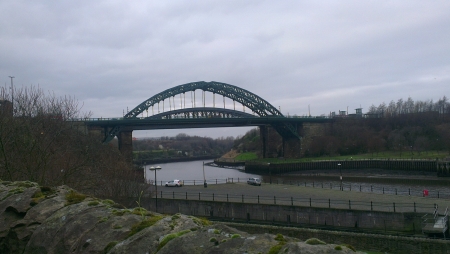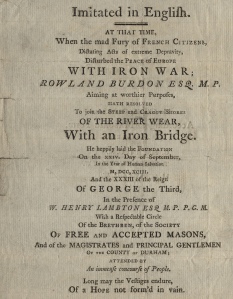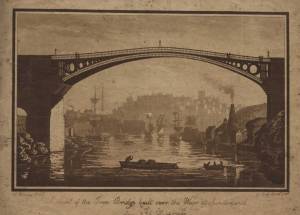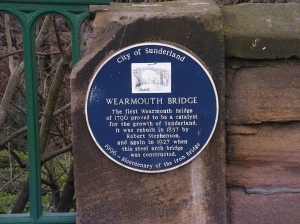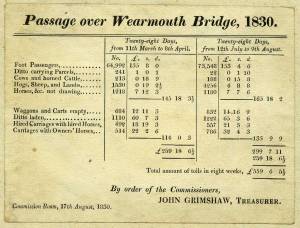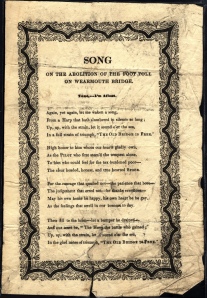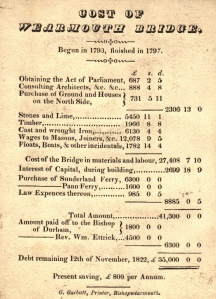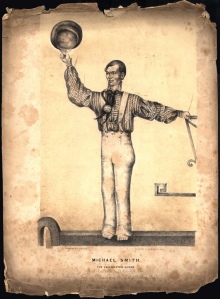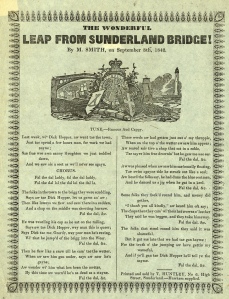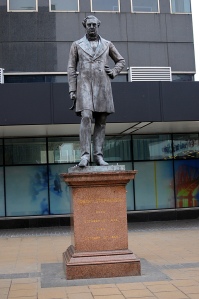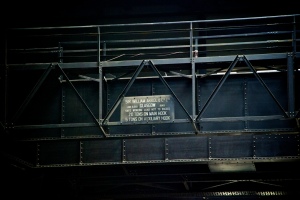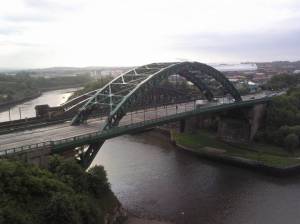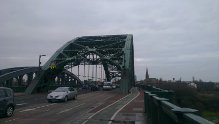
Penshaw Monument is a folly that was built in 1844 and is dedicated to John Lambton, the first Earl of Durham. It stands on Penshaw Hill between the two Sunderland districts of Washington and Houghten le-Spring. The correct title of the structure is The Earl of Durham’s Monument but it is better know to local people as Penshaw Monument.

The monument’s more commonly known name of “Penshaw” derives from a mixture of Celtic and Anglo-Saxon words. Pen is a Brythonic or Cumbric word for hill, as in the name Penrith, and shaw is derived from sceaga meaning “wooded area”; and finally the Old/Middle/Modern English word “hill”. The name thus means “wooded-hill hill”.
The 70 foot high folly is a replica of the Temple of Hephaestus in Athens and can be seen for miles around. It is considered to be the most beloved landmark for Wear-siders and it appears on the badge of Sunderland Football Club.
The monument stands at 20 meters high, 30 meters long and 16 metres wide. Each of the columns have a 2 meter diameter. The monument was designed by John and Benjamin Green and built by Thomas Pratt of Sunderland, it was built in a Doric order which was one of the three systems used in ancient Greek architecture.

The foundation stone was laid by Thomas Dundas, the 2nd Earl of Zetland, on 28th August 1844. This was four years after the death of John Lambton. The folly is made of gritstone from the Marquess of Londonderry’s quarries on the east coast. The stone blocks are held together with steel pins and brackets.
In 1926 on Easter Monday a 15-yea-old boy named Temperley Arthur Scott fell to his death from the top of the monument. He was with three friends when it happened and 20 others witnessed the accident. They had reached the roof via the staircase and had done two circuits round the roof but on the third Scott moved to avoid a visitor and fell from an area with no protective wall. After this incident it was decided that the monument staircase would be shut to the public.
Penshaw folly remained closed to the public up until 29th August 2011 when a special National Trust opening granted access for the public. This was a test to see if the monument should open on future one-off days. It was so popular that more than 2000 people turned up, however not all of them were able to go to the top of the monument but were asked to give contact details in order to be given priority on the next open day.

Visitors have the opportunity to use the hidden staircase which is in one of the pillars in order to enjoy the views from the top of the monument. This is usually done on weekends at a cost of £5 per person between Good Friday until the end of September; all funds being used for the upkeep of the monument.
As we are now nearing Easter and the folly is soon to be open to the public I would certainly recommend a visit.

